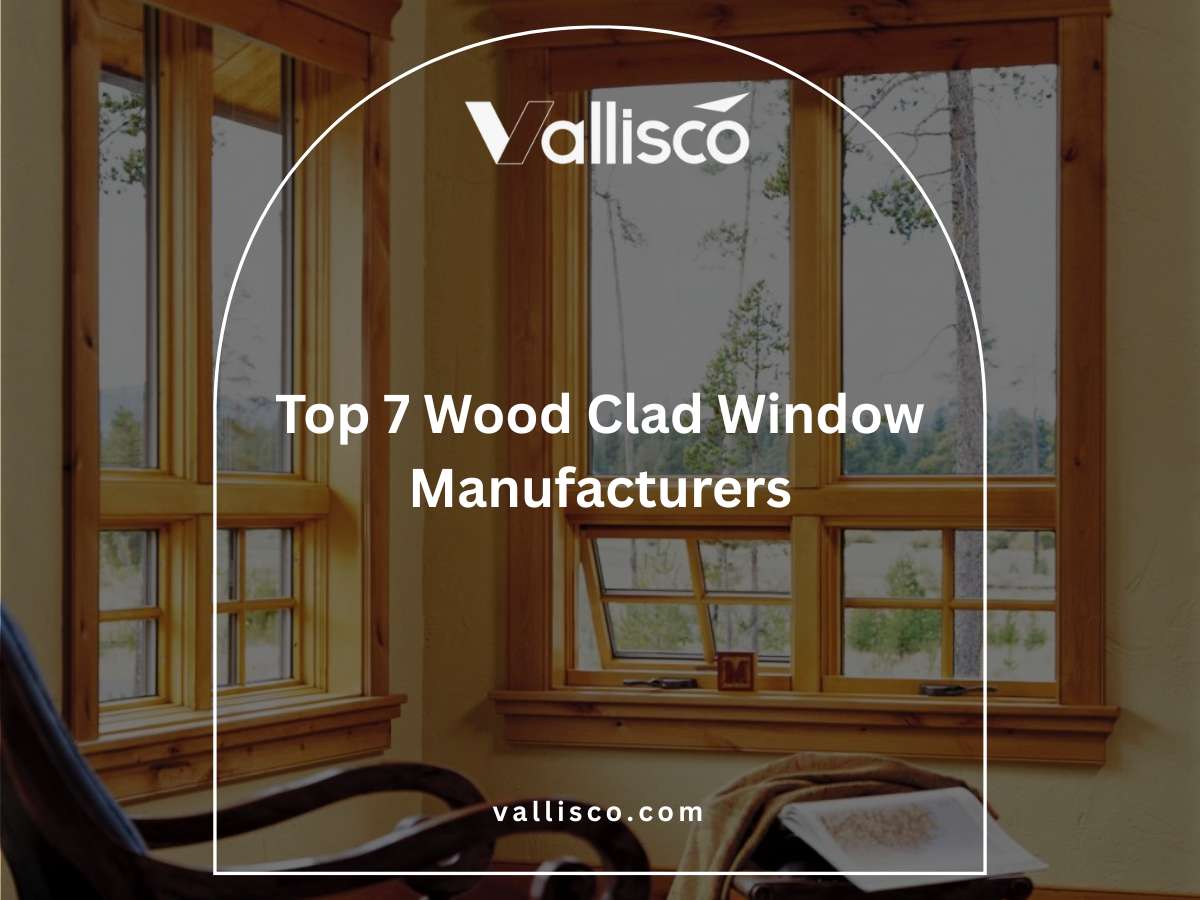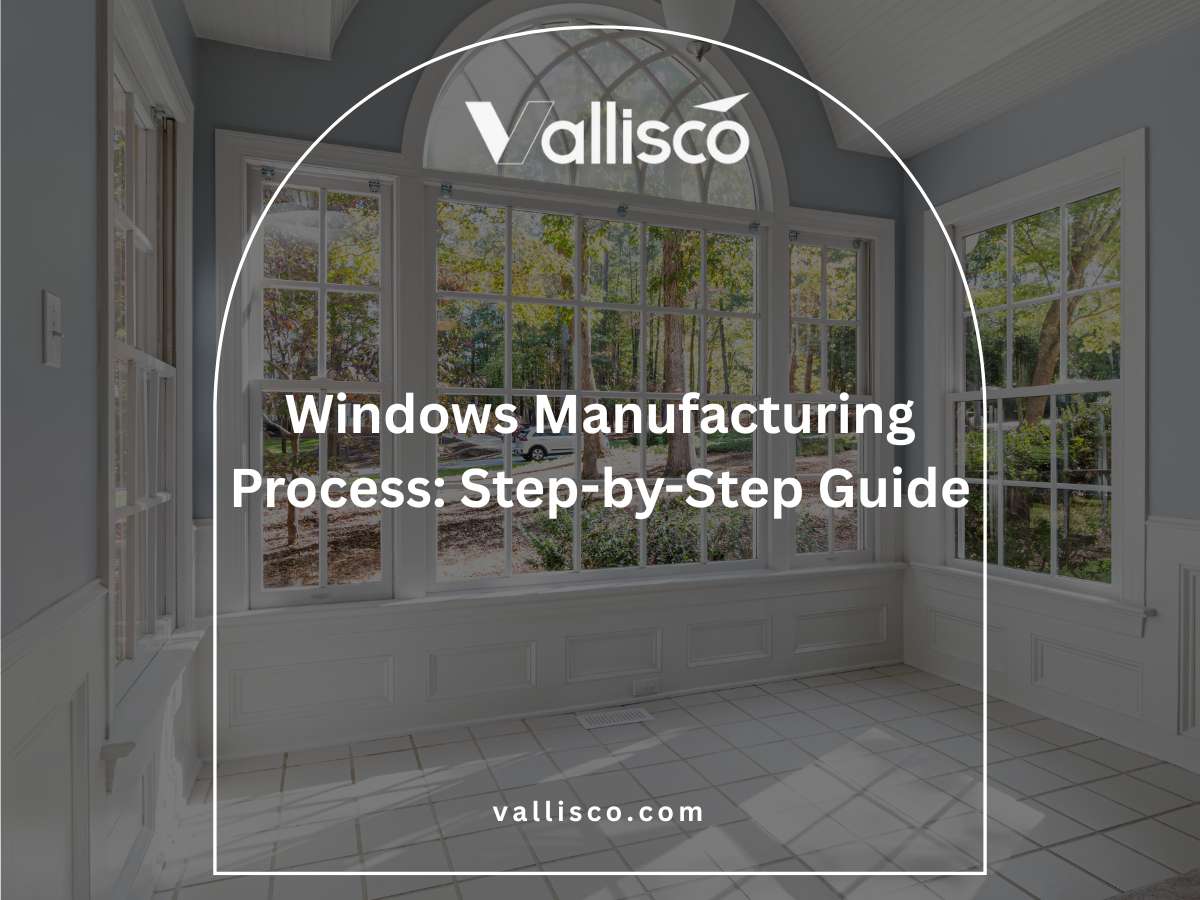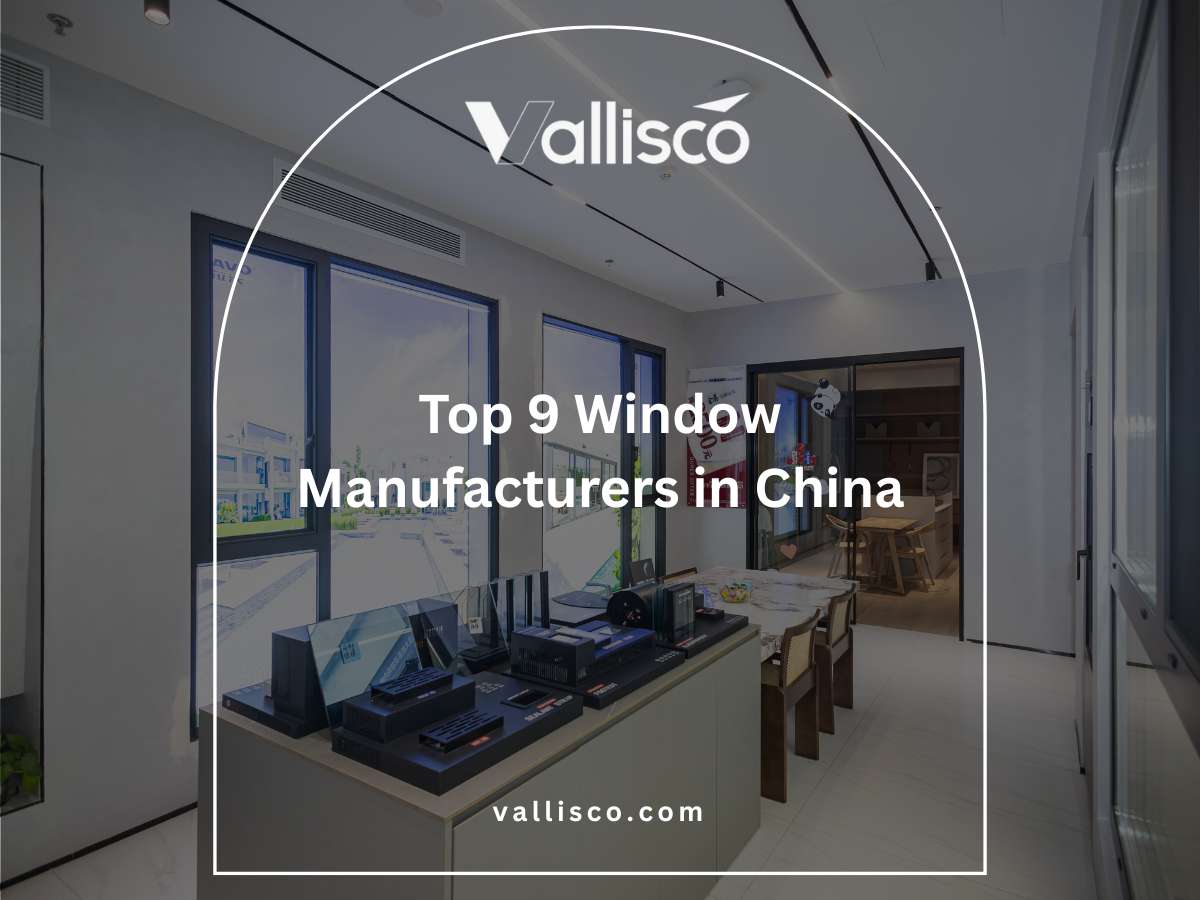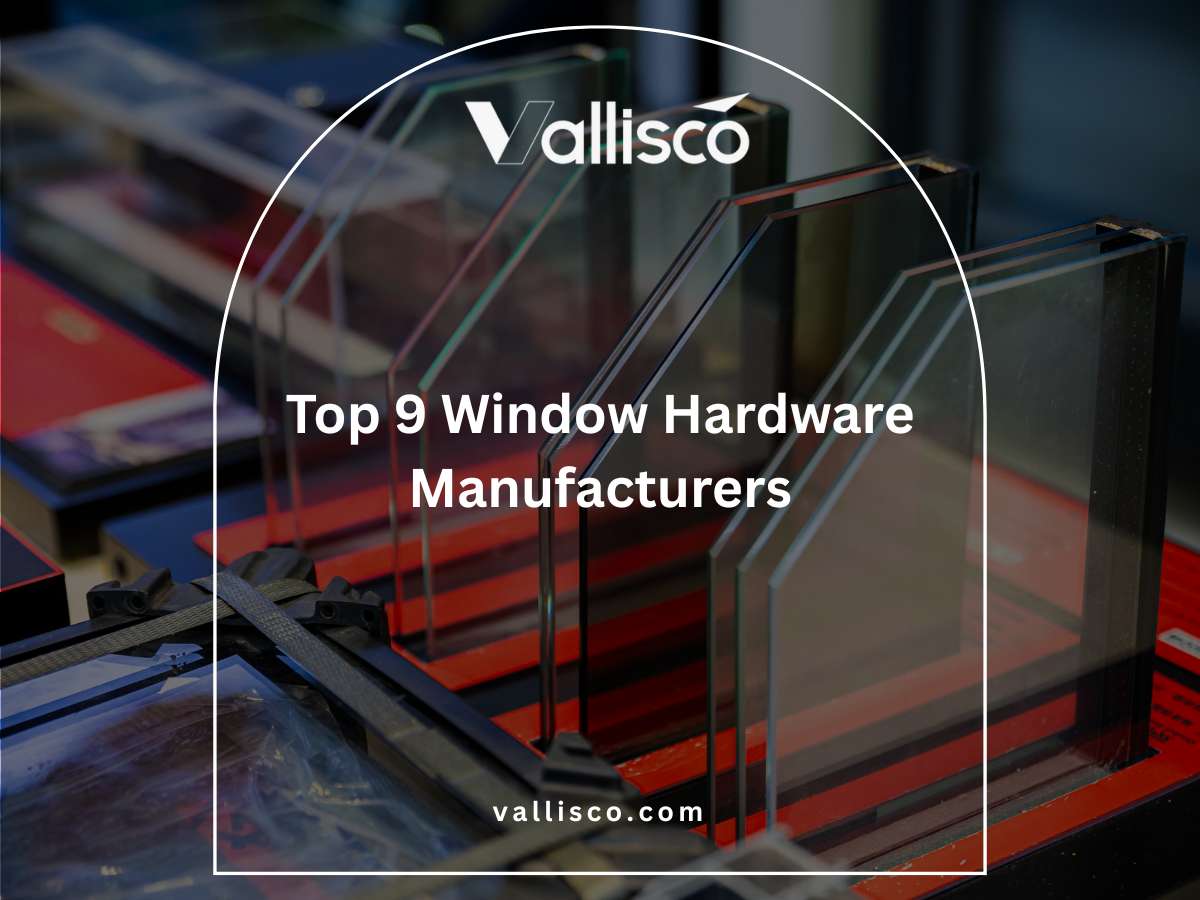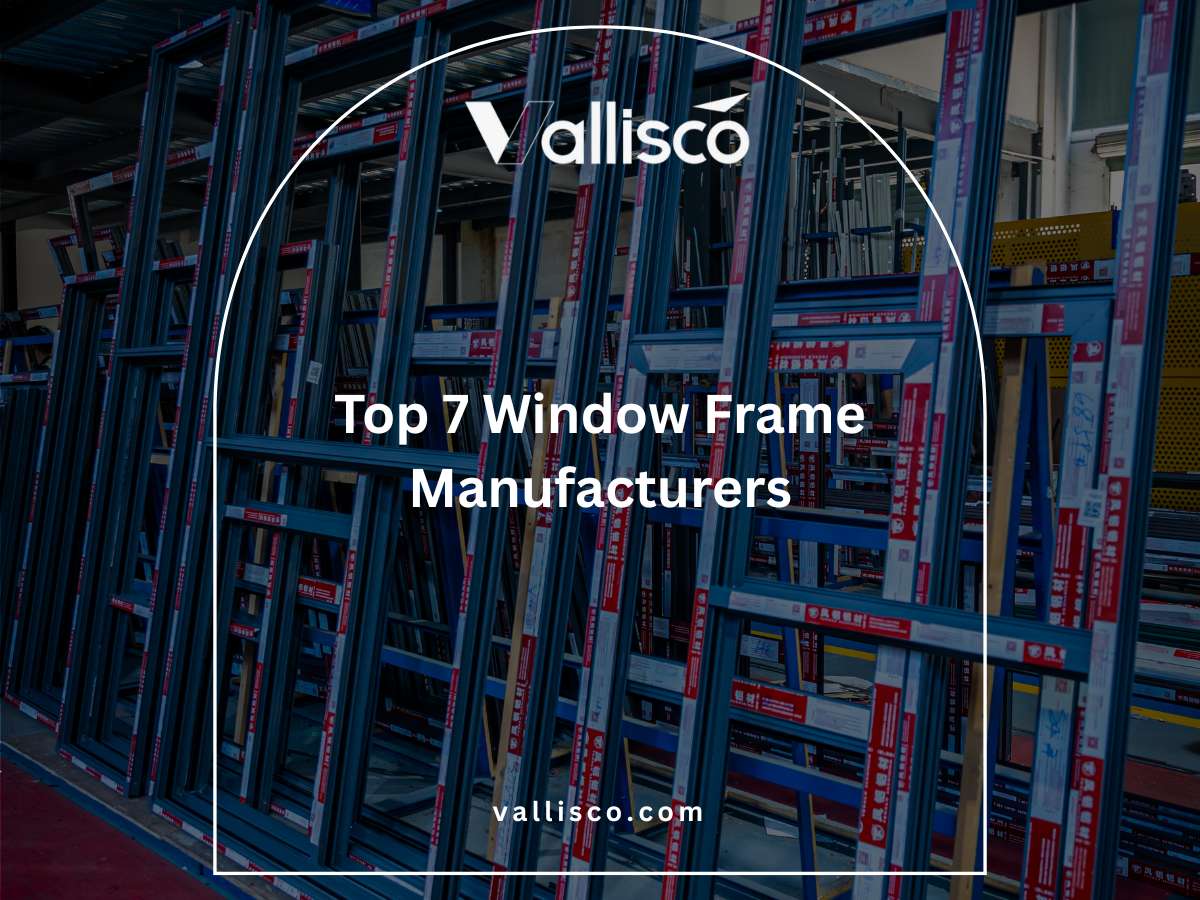One of my hotel clients replaced their front doors twice in a year because the original install couldn’t handle daily traffic. That repair costs more than the doors themselves.
That’s when I realized a strong glass door isn’t just a feature, it’s a need.
Over the years, I’ve worked with owners and engineers to choose doors that actually hold up. This list comes from jobs where the doors lasted and the owners were happy.
You’ll find 9 commercial glass doors that are reliable, clear in design, and made for regular use. If you want fewer problems after installation, this review will help.
Picking doors shouldn’t feel like a gamble.
So, let’s get started!
Quick List Guide
Here’s a quick look at each door type before we dive into the full details. Use this table to spot what fits your space best.
| Door Type | Key Features Summary | Best For Highlights | Things To Watch Out For |
| Frameless Glass Doors | No visible frame, thick tempered glass, minimal look | Boutique hotels, spa entries, modern offices | Fitting strength, safety codes, glass type |
| Aluminum-Framed Glass Doors | Strong frames, larger panels, multiple finish options | Office entries, retail shops, hotel side doors | Finish wear, water leaks, bulky look |
| Automatic Sliding Doors | Motion sensor, hands-free, quiet track system | Main entries, clinics, airports | Needs power backup, sensor upkeep, air leaks |
| Swinging Glass Doors | Hinges or pivots, push-pull access, soft-close optional | Spas, back-of-house, small shops | Swing clearance, lock options, hinge wear |
| Revolving Glass Doors | Rotating wings, air control, manual or automatic | Airports, hotels, lobbies | Needs space, slower flow, local code limits |
| Bi-Fold Glass Doors | Foldable panels, wide openings, weather-sealed | Patios, villas, event rooms | Track upkeep, panel weight, secure locks |
| Sliding Glass Partitions | Track-guided, frameless or framed, open layouts | Offices, hotel meeting rooms, studios | Weak sound block, track issues, panel weight |
| Impact-Resistant Doors | Laminated glass, strong frame, tested safety | Retail fronts, storm zones, secure sites | Heavy, costlier, may need code checks |
| Panic Bar Glass Doors | Push bar exit, safety-rated glass, code-compliant | Gyms, exits, public halls | Reset bar, add locks, style limitations |
Let’s move ahead and explore each door in more depth, real use, pros, and how it fits your space.
1. Frameless Glass Doors
I’ve used frameless glass doors in boutique hotels and modern office entries where a clean, open look mattered most. If you’re going for a sleek, high-end style without extra framing, this is the option worth considering.
Features
- Thick Tempered Glass: Uses 10 to 12mm tempered or laminated glass for strength and safety. This thickness helps the door stay rigid and handle daily use.
- No Visible Frame: Gives a seamless, clean look that blends into modern interiors. It helps the door disappear while still doing its job.
- Hardware-Based Support: Relies on top patch fittings, floor pivots, and patch locks instead of a full frame. These pieces hold the door in place while keeping the design minimal.
- Customizable Size: Can be made as single or double doors based on the opening width. This gives you more control over the layout and space.
Best For
- Indoor Hotel Lobbies: Adds a sense of openness and brightness without sacrificing comfort or design.
- Villa Living Areas: Helps blend indoor and outdoor spaces while keeping the design minimal and modern.
- Spa and Lounge Entrances: Creates a calm, high-end look that supports a quiet guest experience.
- Private Offices or Meeting Rooms: Keeps sightlines open while still defining separate areas.
- Greenhouse Interiors: Works well for dividing spaces without blocking light flow.
Things To Consider
- Hardware Strength: Weak pivots or patch fittings can cause sagging or uneven movement over time.
- Building Code Requirements: Some locations may need added safety features, especially for public access areas.
- Glass Quality: Make sure it’s fully tempered or laminated to avoid safety issues during impact or breakage.
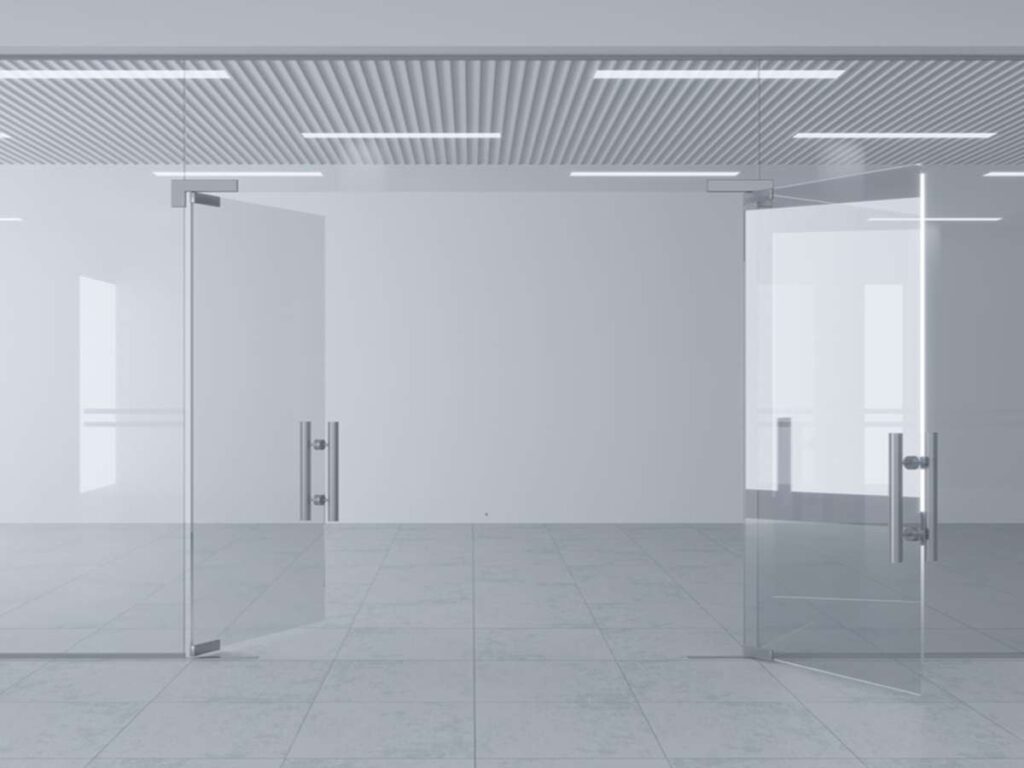
2. Aluminum-Framed Glass Doors
Aluminum-framed glass doors are a go-to choice when you need structure, durability, and a clean finish all in one. I’ve used them in busy hotels and office spaces where strength matters just as much as appearance. If your project needs something dependable that still looks sharp, this type of door is worth a serious look.
Features
- Durable Frame Construction: Uses powder-coated or anodized aluminum frames that resist corrosion and daily wear. Vallisco doors are built with reinforced corners and commercial-grade finishes to support daily use in hotels, offices, and retail spaces.
- Supports Larger Glass Panels: The metal frame allows for wider and taller doors without risking stability. This gives you more freedom with design.
- Thermal Break Option: Some models come with thermal breaks to help with energy efficiency. This can reduce heat or cold transfer through the frame.
- Wide Finish Choices: Available in black, bronze, silver, and custom finishes. It lets you match the door with the building’s overall style.
Best For
- Hotel Side Entrances: Offers a durable, weather-resistant entry without taking attention from the building’s main design features.
- Office Reception Areas: Brings in light while keeping a clear boundary between public and private zones.
- Service Corridors in Resorts: Handles regular traffic and wear, especially in back-of-house or staff areas.
- Retail Storefronts: Supports large glass panels while offering a strong structure that holds up to daily use.
- Dining Spaces with Patio Access: Frames large openings without warping, even when exposed to temperature changes.
Things To Consider
- Finish Longevity: Some finishes may fade or scratch over time, especially in areas with strong sunlight or coastal air. Choose high-quality coatings if appearance matters long-term.
- Water Seepage Risks: Poorly sealed frames can let water in during storms or washing. Make sure the installation includes proper gaskets and drainage.
- Frame-to-Glass Ratio: Too much frame can take away from the clean glass look. Find a balance that gives you strength without making the door feel bulky.
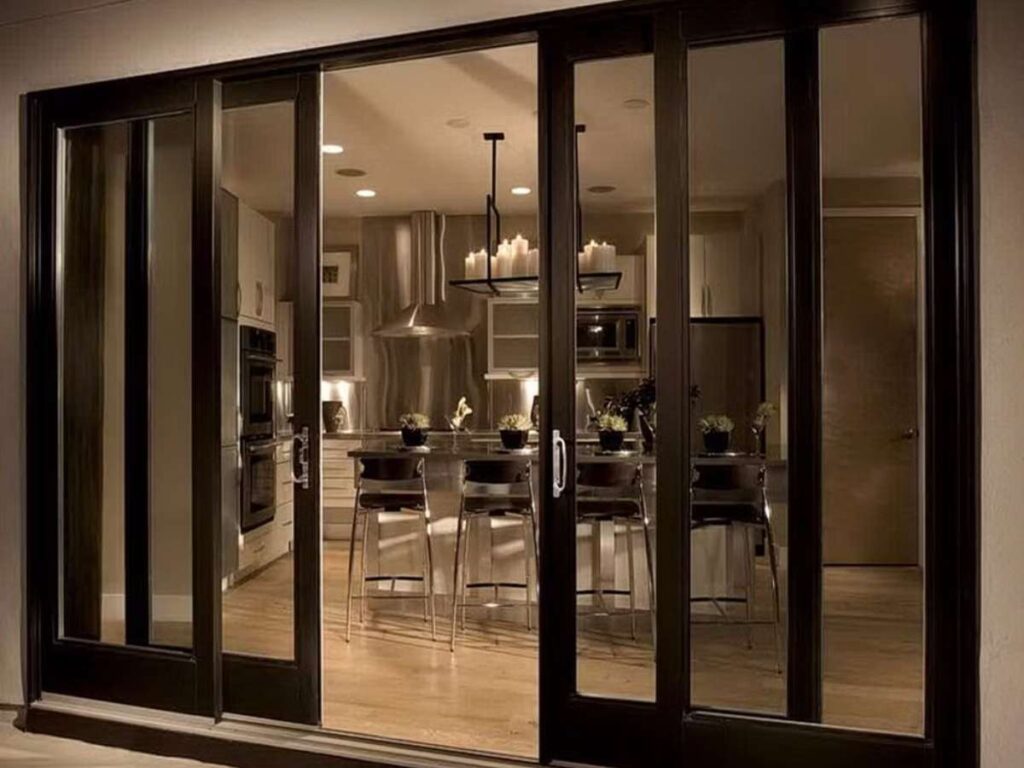
3. Automatic Sliding Glass Doors
Automatic sliding glass doors make life easier where hands-free access matters. I’ve seen them work well in busy hotel lobbies, especially where guests are carrying luggage or carts. If you’ve ever watched someone struggle with a manual door in a high-traffic spot, you know why automation is worth the investment.
Features
- Motion Sensor Activation: Opens automatically when someone approaches. This reduces touchpoints and improves traffic flow.
- Smooth Track System: Built-in floor or overhead tracks guide the doors quietly and consistently. Good track alignment keeps things running smoothly.
- Built-In Safety Sensors: Detects people or obstacles to prevent accidents. Many systems come with adjustable timing and sensitivity.
- Flexible Panel Design: Can be single, double, or telescoping panels depending on your wall width. Helps fit both narrow and wide entries.
Best For
- Main Hotel Entrances: Handles large volumes of people without slowing down access.
- Airport Lounges or Lobbies: Keeps passenger movement flowing while offering a polished first impression.
- Retail Shops with Carts or Trolleys: Allows customers to enter and exit without pausing to open a door.
- Healthcare Facilities: Reduces physical contact and meets hygiene standards in clinics or waiting areas.
- Senior Living Properties: Helps residents move freely with walkers or wheelchairs without needing help.
Things To Consider
- Power Backup: Make sure there’s a battery or manual override in case of power loss, especially for emergency exits.
- Maintenance Needs: Tracks and sensors need regular cleaning and occasional servicing to keep things working right.
- Weather Sealing: Poorly sealed units may let in wind or rain, especially in exposed exterior entries. Look for models with tested sealing systems.
4. Swinging Glass Doors
Swinging glass doors is one of those options that just work when you want something familiar and functional. I’ve installed these in hotel back offices and spa entrances where you need easy access without a complex system.
Features
- Single or Double Leaf Options: Available in one-way or two-way swing styles. You can match the door layout with how people move through the space.
- Hinge or Pivot Mounts: Can be mounted with standard hinges or floor pivots. Floor pivots offer smoother, wider swings in high-use areas.
- Push-Pull Handles: Usually fitted with vertical pull bars or flat push plates. These handles make them simple to operate without electronics.
- Soft-Close Add-Ons: Optional soft-close hardware can reduce noise and wear. Great for keeping the environment quiet and professional.
Best For
- Spa or Wellness Room Entrances: Offers a quiet, gentle entry option that fits peaceful environments.
- Back-of-House Areas in Hotels: Gives staff quick access without needing automation or sensors.
- Private Meeting Rooms: Maintains separation while still letting in natural light.
- Small Retail Shops: Works well in tighter layouts where sliding doors aren’t practical.
- Side Access Points in Villas: Gives a clean entry point that blends with modern architecture.
Things To Consider
- Clear Swing Path: Make sure there’s enough room on both sides to allow the door to open fully without hitting walls or furniture.
- Latch and Lock Options: Choose reliable hardware for privacy or restricted access where needed. Not all swinging doors come standard with locks.
- Wear Over Time: Hinges and pivots may loosen if not checked periodically, especially in high-traffic spots.
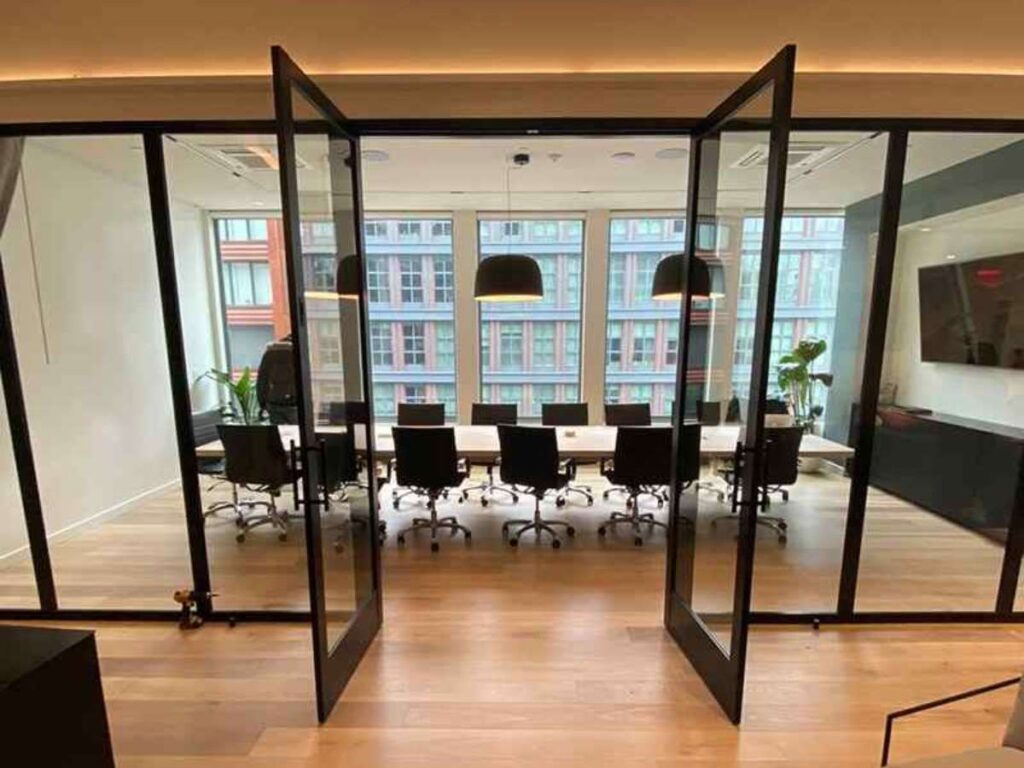
5. Revolving Glass Doors
Revolving glass doors are built for places that need continuous flow without compromising energy efficiency. I’ve worked with them on commercial buildings where drafts were a problem at busy entrances. If your project needs to handle constant foot traffic while keeping indoor conditions stable, this type is worth looking into.
Features
- Multiple Wing Design: Usually comes in three or four-panel configurations. These panels rotate around a central shaft to keep traffic moving in both directions.
- Built-In Air Control: Helps maintain indoor climate by limiting air exchange. This is one of the reasons I’ve recommended them for buildings with lobby HVAC systems.
- Manual or Automatic Rotation: Can be set up to rotate with a push or powered by motion sensors. Automatic versions help with accessibility and ease.
- Central Canopy Structure: Includes a sturdy canopy that hides mechanics and lighting. I’ve used this feature to create a clean entry look while protecting equipment.
Best For
- Office Towers or Corporate Entrances: Handles high-volume traffic without disrupting airflow or comfort inside.
- Airports or Transit Stations: Moves large groups through fast, with minimal backup.
- Hotels with Central Lobbies: Keeps noise and outside air from flooding into check-in areas.
- Convention Centers: Manages crowds and keeps the space secure between events.
- Hospitals or Labs: Helps maintain clean zones by controlling outside airflow.
Things To Consider
- Foot Traffic Speed: Not ideal if your guests often move quickly or carry large baggage, they’ll need to slow down a bit.
- Safety Settings: Make sure the door has sensors or emergency stop features to meet local codes.
- Space Requirements: Needs a wider footprint than standard doors, so plan ahead for entrance layout.
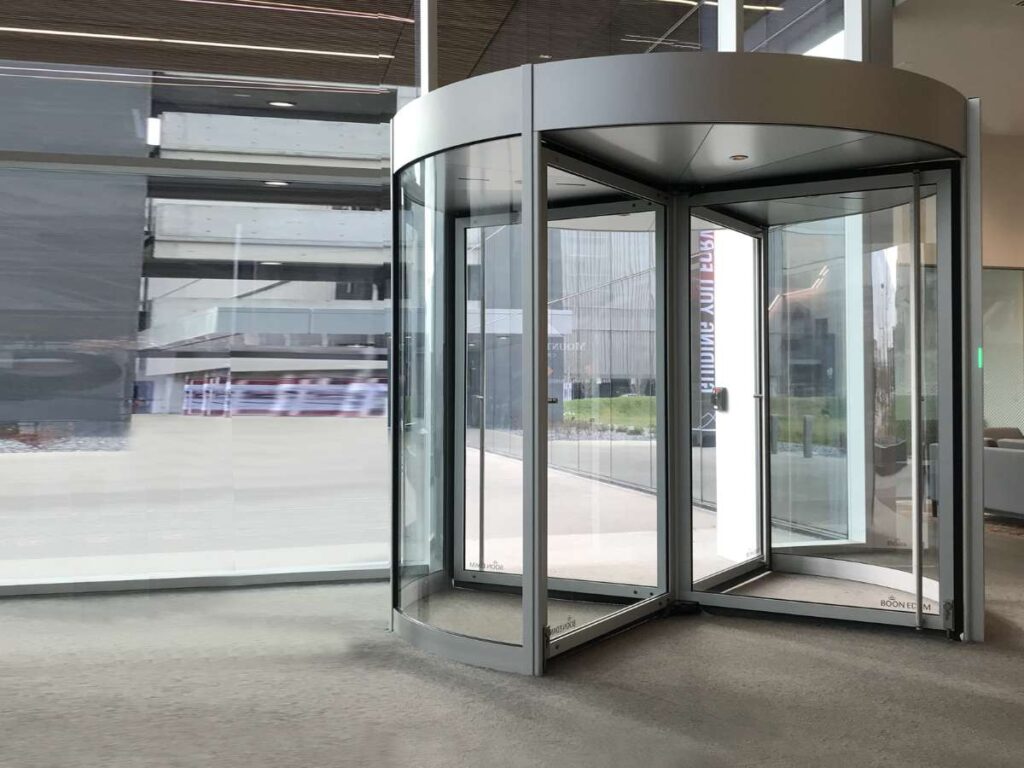
6. Bi-Fold Glass Doors
Bi-fold glass doors are made of multiple panels that fold and slide to the side, opening up wide entryways without needing much swing space. They’re a great fit when you want both openness and a solid seal when closed. I like how this type of door makes indoor-outdoor transitions feel natural without sacrificing privacy or control.
Features
- Multi-Panel Folding System: Panels fold and stack to one or both sides. This allows you to fully open up the wall without needing extra clearance space.
- Top or Bottom Track Mounting: Can be mounted on the floor or ceiling depending on your space needs. I usually prefer top-hung systems to keep the floor area clean.
- Weather-Resistant Seals: Comes with built-in gaskets and drainage to help keep water and air out. This is something I’ve checked closely in coastal and rainy projects.
- Glass and Frame Options: Available in various frame finishes and glass types. Lets you match the style to modern or classic designs.
Best For
- Hotel Conference Areas: Opens up large meeting rooms for events or splits them into smaller spaces when needed.
- Villas with Garden Access: Blends indoor comfort with outdoor scenery for private properties.
- Restaurant Patios: Allows for a full open-air feel on nice days while closing up tight when weather shifts.
- Spas or Wellness Retreats: Creates privacy when closed, but can be folded away to expand space.
- Retail Showrooms: Gives you flexibility in layout for larger product displays or seasonal changes.
Things To Consider
- Track Maintenance: Folding systems rely on clean tracks for smooth operation, debris buildup can cause issues.
- Panel Weight and Size: Larger panels look great but may need reinforced hardware and careful alignment.
- Security Options: Folding systems need good multi-point locks for secure closure after hours.

7. Sliding Glass Partition Doors
Sliding glass partition doors give you the flexibility to separate interior areas without making them feel closed off. They’re useful in layouts where you want open flow most of the time, but still need occasional division.
Features
- Track-Based Sliding System: Uses top-hung or floor-mounted tracks for smooth movement. This lets panels slide easily across wide openings.
- Framed or Frameless Options: You can choose full glass panels with minimal framing or more solid-looking designs. The choice depends on how visible you want the structure to be.
- Stacking or Parallel Panels: Some models let panels stack at one end, while others stay in-line. This helps tailor the setup to your floorplan.
- Privacy Add-Ons: Frosted glass, blinds-between-glass, or switchable film can be added. I’ve recommended these in office areas that needed both openness and occasional privacy.
Best For
- Office Interiors: Divides work zones or meeting areas without blocking natural light.
- Hotel Meeting Rooms: Offers flexible layouts that adjust to different group sizes or events.
- Retail Display Areas: Helps organize different product zones while keeping things visually open.
- Fitness Studios or Wellness Spaces: Separates class areas without feeling boxed in.
- Greenhouse Cafés or Lounges: Keeps light flowing while sectioning off seating or dining zones.
Things To Consider
- Sound Transmission: These doors don’t block sound well, so they’re better for visual separation than privacy.
- Track Alignment: Misaligned tracks can lead to sticking or wear over time, install needs to be exact.
- Panel Handling: Large panels may feel heavy without proper rollers or guides, especially in long runs.
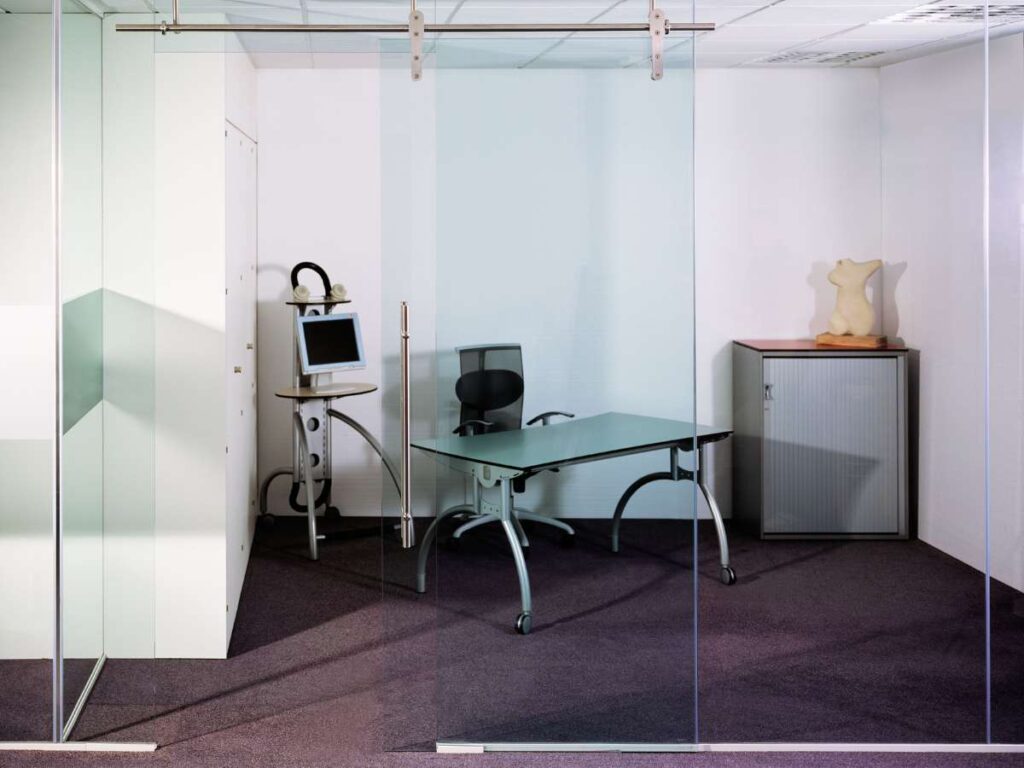
8. Impact-Resistant Glass Doors
Impact-resistant glass doors are made with layered safety glass that holds together even if hit or cracked. They’re designed for areas where strength, safety, or storm resistance matters more than just appearance. I’ve seen these doors prevent serious damage during harsh conditions, and that kind of reliability stays with you.
Features
- Laminated Safety Glass: Uses multiple layers bonded together to prevent shattering. If you need this type of door, choose Vallisco. Their doors are made with high-quality interlayers and tested to meet impact safety standards for commercial use.
- Reinforced Framing: Comes with stronger aluminum or steel frames to handle pressure or blunt force. Good framing is key to performance.
- Storm-Grade Certification: Many models are tested for wind, debris, or impact resistance. Helpful in coastal or hurricane-prone regions.
- Optional Security Locks: Can include stronger locking systems or multipoint locks for added protection. Useful in areas with higher risk exposure.
Best For
- Street-Facing Retail Entrances: Protects against vandalism or attempted forced entry.
- Hotel Doors in Storm Zones: Offers extra safety during high-wind conditions without sacrificing style.
- Bank or Finance Office Entries: Adds a layer of security while keeping a clean, professional look.
- Healthcare Facilities with Emergency Access: Stays intact during impact but can still be opened safely.
- Warehouse Showroom Doors: Withstands daily wear from carts or moving equipment.
Things To Consider
- Weight and Handling: The added layers make the glass heavier, hinges and hardware must be rated for it.
- Cost Factor: These doors cost more upfront but often save money on repairs or replacements later.
- Local Code Requirements: Always check if your project location has specific standards for impact-rated openings.
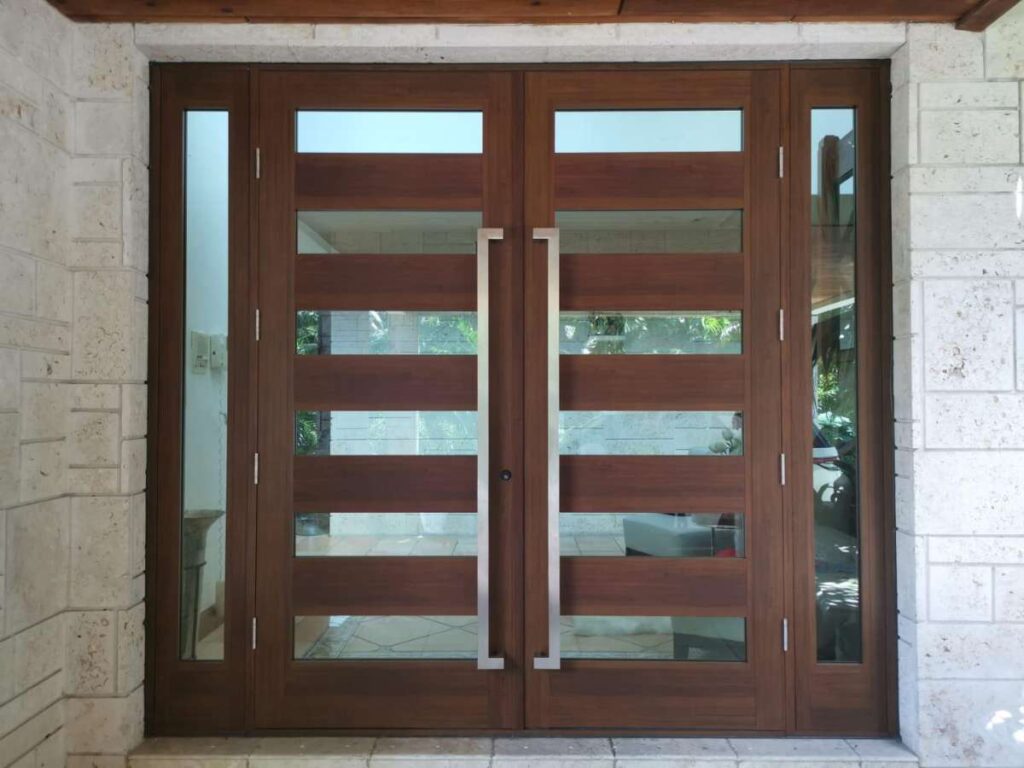
9. Panic Bar Glass Doors
Panic bar glass doors are safety-focused exit doors that use a horizontal push bar instead of a standard handle. They allow people to exit quickly and easily during emergencies, without needing to twist or pull anything.
Features
- Built-In Panic Hardware: Comes with a push-to-open bar across the interior side. This lets people exit quickly without turning a knob or handle.
- Tempered or Laminated Glass: Uses safety-rated glass strong enough for public and commercial spaces. Some models also support fire-rated glazing.
- Reinforced Frame: Metal framing adds support around the push bar area to handle pressure during high-traffic exits.
- Code-Compliant Design: Often meets fire, safety, or ADA requirements. I’ve worked with suppliers to confirm specs before finalizing installs.
Best For
- Hotel Emergency Exits: Offers guests a clear and fast way out in case of fire or power failure.
- Office Fire Escape Routes: Meets local safety codes while blending into modern interiors.
- Public Hallways in Large Buildings: Handles high volume and constant use without wearing down quickly.
- Schools or Training Facilities: Helps staff and students exit safely in group settings.
- Gyms or Fitness Studios: Allows quick egress while keeping the entry clean and professional-looking.
Things To Consider
- Reset Mechanism: After use, the bar may need to be reset manually or serviced depending on the model.
- Security Balance: While great for exit, panic bars can be a weak point for forced entry if not paired with the right locks.
- Aesthetics vs. Function: These doors are made for function first, make sure the style matches the look of your space.
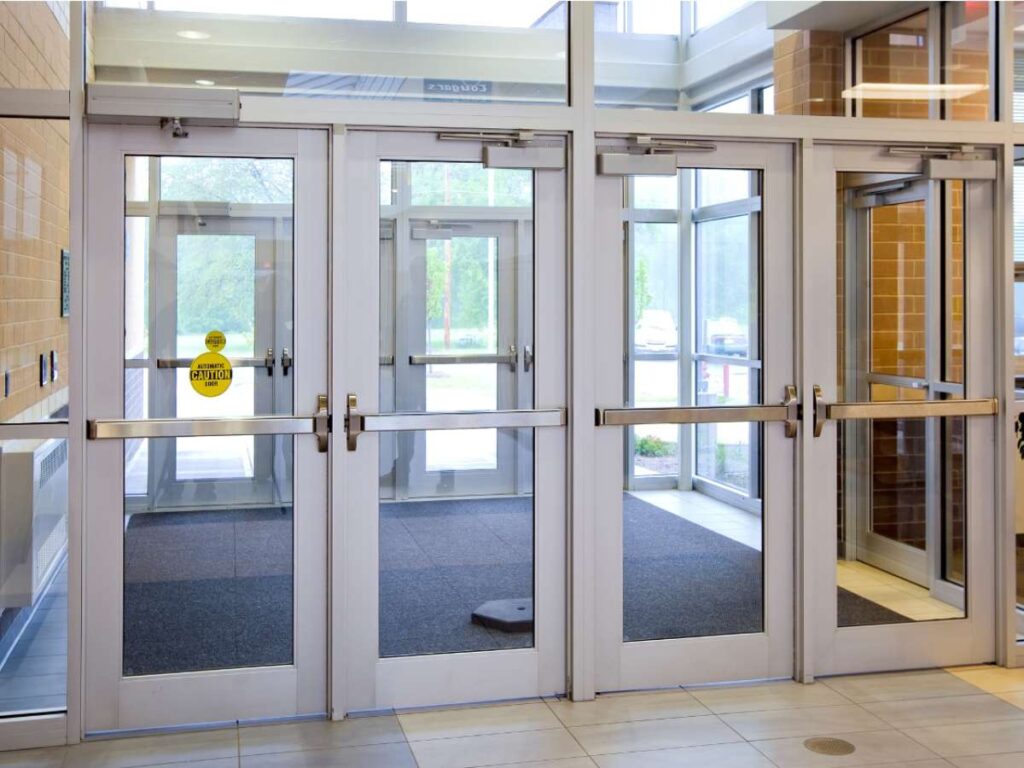
How To Choose The Right Commercial Glass Doors?
There’s no one-size-fits-all when it comes to commercial glass doors. I’ve been in projects where the right choice saved time and money, and others where a mismatch led to delays and frustration. If you want to avoid those headaches, here’s what you should pay attention to before placing an order.
Match the Door to Its Location
Think about whether the door will be used for interior space, a street-facing entrance, or a high-traffic emergency exit.
Each location comes with different demands. What works perfectly in a quiet meeting room will not hold up at busy public entry.
Check Safety and Building Codes
Fire exits, storm-prone areas, and public-facing buildings all have regulations for glass type, locking systems, and hardware.
I always check local codes before making a choice. Planning early is far easier than replacing non-compliant doors after installation.
Look at Long-Term Durability
A door can look perfect on day one but fails quickly if the materials do not match the demands of the space. High-traffic areas benefit from stronger frames and thicker glass. Quieter zones might do fine with lighter materials.
Balance Design with Function
It is easy to focus on appearance, but usability matters just as much.
Consider who will be opening the door every day, whether it is guests, staff, or delivery crews. Choose hardware and a layout that makes their work easier, not harder.
Conclusion
That hotel client I mentioned earlier? They never had to replace their new doors again because this time, we picked the right ones.
Choosing the right glass door isn’t just about looks. It’s about function, safety, and making life easier for the people who use them.
Go back through the list if you’re unsure which one fits your space best.
Make your choice wisely, and it will save you time and stress down the line.
Still deciding?
Contact Vallisco today and we’ll help you get it right the first time!
Explore More of Our Resources
If you’re searching for more choices, explore our full collection of products. We’ve picked out some great options for you:
Still haven’t found what you’re looking for? Don’t hesitate to contact us. We’re available around the clock to assist you.


